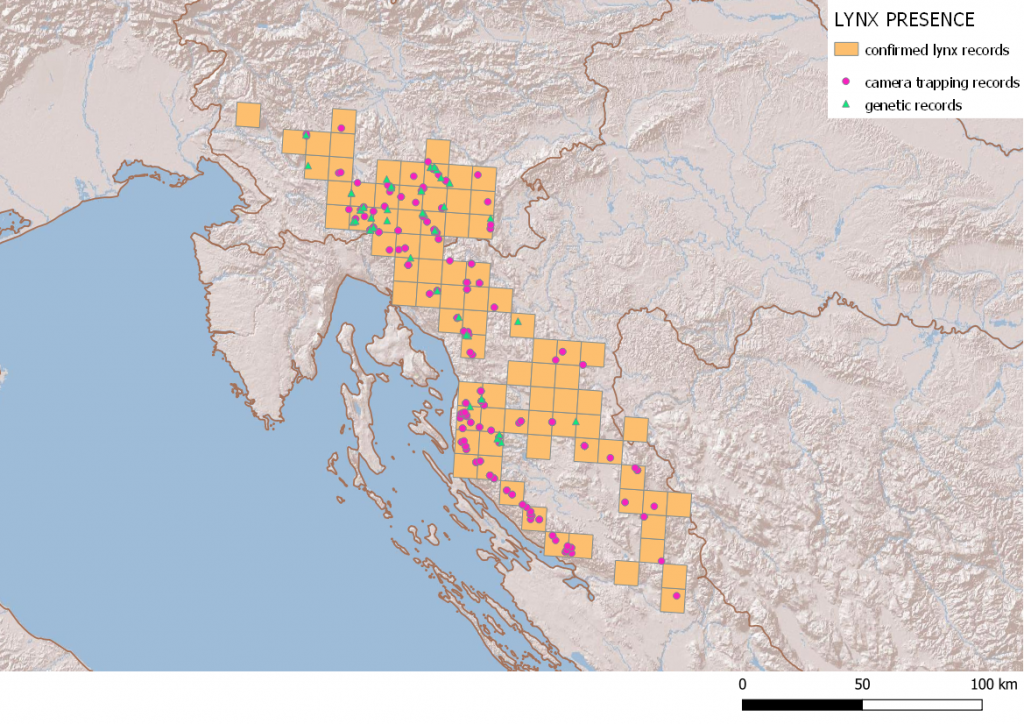We have prepared the first annual report on the progress of reinforcement process and genetic status of the Dinaric SE-Alpine lynx population in lynx-monitoring year 2019-2020. Importantly, the report includes data collected through other funding schemes, which improved out knowledge about the lynx population.
We have surveyed roughly 10.600 km2 with camera traps, which were set up at 348 different locations and identified at least 101 adult lynx from collected photos. This could only be achieved by close cooperation with more than 130 hunters and other collaborators, which is an exceptional feature of the lynx surveillance program in Dinarics and SE Alps. With genetic analysis, we found that there is a potential for rapid inbreeding decrease if the introduced animals continue to reproduce successfully. Finally, we have used telemetry to monitor six translocated lynx (Goru, Katalin, Doru, Alojzije, Maks and Boris), three resident lynx (Teja, Mihec and Bojan) and one offspring of translocated and resident lynx (Mala; the offspring of Goru and Teja).
At the moment, destiny of two translocated lynx, whose signal from GPS collars was lost (Doru and Pino), remains unclear. In 2021, translocations and releases of Carpathian lynx will focus on the Alpine region. Since no confirmed presence of resident lynx was recorded here, simultaneous releases of males and females will be essential for the successful formation of a stepping-stone population nucleus in SE Alps.

Confirmed lynx records (orange squares) in the Dinaric-SE Alpine area from May 2019 to April 2020 lynx year. Three types of data were considered as confirmed lynx records: C1 and C2 opportunistic data, camera trapping (pink dots) and genetic records (green triangles).
